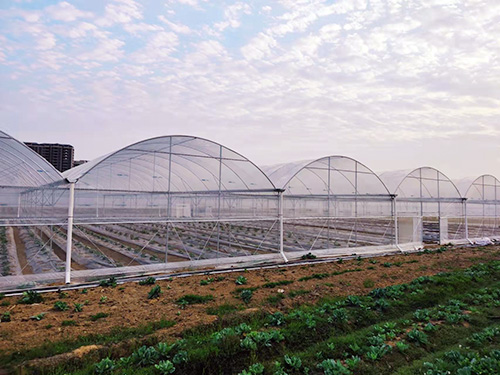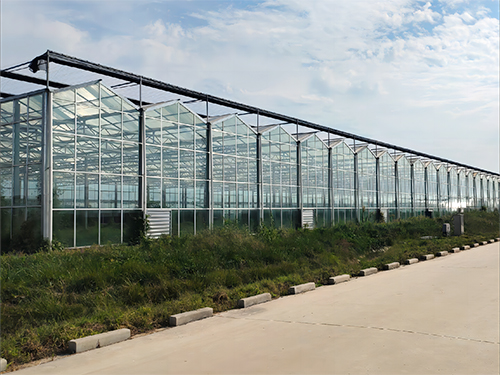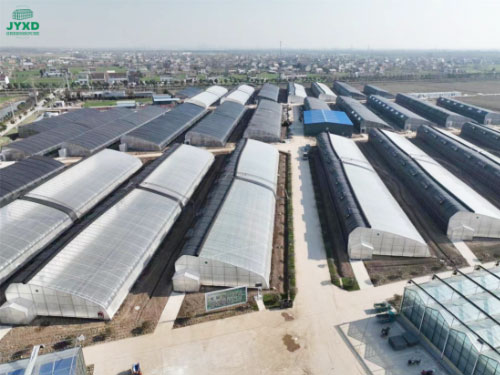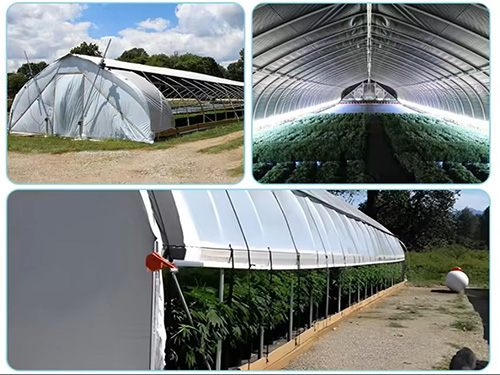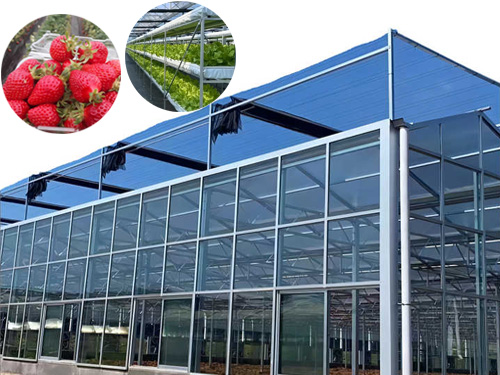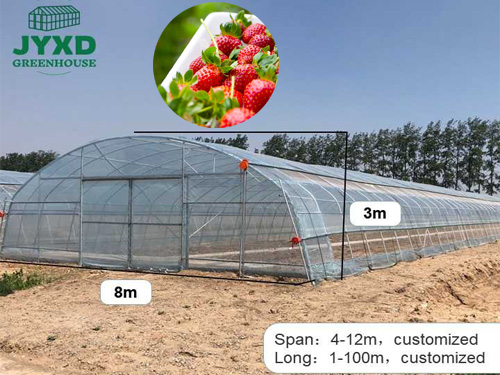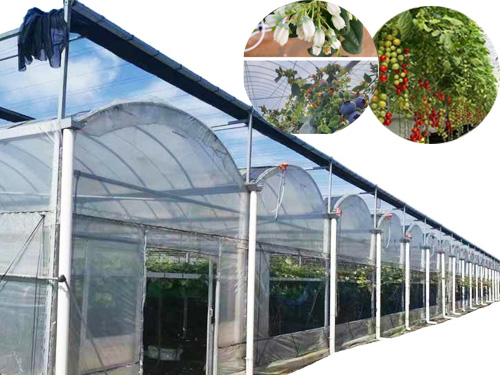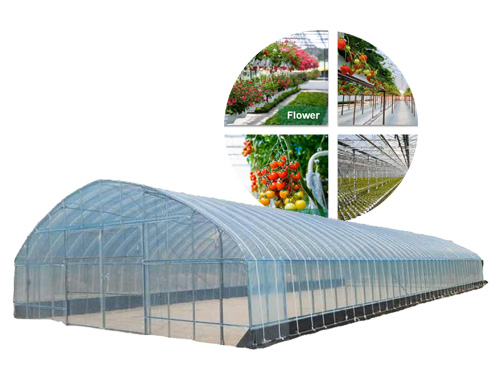NEWS DETAILS
NEWS INFORMATION
How to Establish an Effective Nutrient Management System in Greenhouses
AUTHOR:jyxd-greenhouse DATE:2024-11-21 18:49:40 HITS:169
In greenhouse cultivation, establishing a nutrient management system is crucial for healthy plant growth. Through scientific nutrient management, greenhouse growers can ensure crops receive stable nutrition, improving both yield and quality. This article will detail the key elements, methods, and best practices for nutrient management in greenhouses, providing a professional guide to nutrient management for your greenhouse farming.
1. The Importance of Nutrient Management in Greenhouses
Greenhouse nutrient management involves controlling nutrient supply to meet plants' nutritional needs at different growth stages. Effective nutrient management not only increases crop yield and quality but also reduces fertilizer waste and lowers production costs. Unlike open-field farming, greenhouse cultivation occurs in a controlled environment, making precise nutrient management essential to ensure optimal plant growth.
Keywords: greenhouse nutrient management
2. Core Elements for Establishing a Greenhouse Nutrient Management System
To establish an effective greenhouse nutrient management system, the following core elements should be considered:
Soil or Substrate Quality: Soil or substrate is the primary source of nutrients for plants. Greenhouse managers should regularly test soil nutrient content, pH levels, and trace element concentrations. Based on the test results, nutrients should be replenished as needed.
Water Quality: Water is the medium through which nutrients are dissolved and transported. Greenhouse cultivation should use clean water sources and regularly monitor water quality to ensure there are no harmful substances.
Nutrient Balance: Different crops have different requirements for major nutrients such as nitrogen, phosphorus, and potassium. The nutrient management system should scientifically balance these nutrients based on plant needs to avoid over-fertilization or deficiencies.
Fertilization Frequency and Amount: Timely and appropriate fertilization ensures stable plant growth. Fertilization frequency and amount should be adjusted according to the plant's growth cycle and nutrient absorption rate.
Keywords: soil quality, water quality, nutrient balance
3. Steps to Establish a Greenhouse Nutrient Management System
The following steps outline how to establish a greenhouse nutrient management system:
Step 1: Test Soil and Water Quality
Before planting, conduct a comprehensive test of the soil or substrate and water quality in the greenhouse. Understand the soil's nutrient content and pH levels, and analyze the minerals and trace elements in the water. This will provide reference data for the nutrient management system.
Step 2: Choose the Appropriate Fertilization Method
Common fertilization methods in greenhouses include:
Root Irrigation: Nutrients are dissolved in water and delivered directly to the plant roots through drip irrigation or other irrigation systems, ensuring effective nutrient absorption.
Foliar Fertilization: Fertilizer solutions are sprayed onto the plant leaves, which is particularly useful for quickly supplementing trace elements. Care should be taken to avoid application under strong sunlight to prevent leaf burn.
Controlled-Release Fertilizers: Controlled-release fertilizers gradually release nutrients, reducing the need for frequent fertilization. This method is particularly useful for long-cycle crops in greenhouses.
Step 3: Develop a Nutrient Formula
Based on the plant type and growth stage, develop an appropriate nutrient formula. For example, nitrogen fertilizers are suitable during the vegetative growth phase to promote leaf growth; phosphorus fertilizers promote flowering and root development; potassium fertilizers improve fruit quality. Adjusting the ratios of different nutrients can meet the varying needs of plants.
Step 4: Monitor and Adjust
Greenhouse nutrient management is a dynamic process, requiring regular monitoring of soil and plant nutrient status, with timely adjustments as necessary. Changes in temperature or humidity may affect nutrient absorption rates, so fertilization plans should be adjusted according to seasonal and climatic variations.
Keywords: root irrigation, foliar fertilization, controlled-release fertilizers
4. Best Practices for Greenhouse Nutrient Management
To ensure efficient nutrient absorption by plants in the greenhouse, here are some best practice recommendations:
a) Regular Soil and Leaf Analysis
Through periodic soil and leaf nutrient analysis, growers can determine the actual nutrient levels in the plants and assess whether adjustments are needed in fertilization amounts and nutrient ratios. Leaf analysis can also help identify nutrient deficiencies early, preventing growth problems caused by a lack of certain trace elements.
b) Select Fertilizer Types Scientifically
Greenhouse cultivation requires choosing the appropriate fertilizer types. For example, slow-release fertilizers gradually release nutrients, avoiding nutrient waste caused by rapid release. For high-value crops, organic or biological fertilizers can be considered to improve product quality and market competitiveness.
c) Arrange Fertilization Timing Appropriately
Avoid fertilizing during times of high temperature, as this can affect nutrient absorption efficiency and even cause fertilizer damage to plants. Typically, early morning or evening is the ideal time for fertilization, as plants can absorb nutrients effectively under suitable temperature conditions.
Keywords: soil analysis, leaf analysis, fertilizer types
5. Common Issues and Solutions in Greenhouse Nutrient Management
In practical application, greenhouse nutrient management systems may encounter several issues. Here are some common problems and their solutions:
Excess or Insufficient Nutrients: Excessive nutrients can lead to fertilizer damage, while insufficient nutrients hinder plant growth. The solution is to conduct thorough testing before establishing the nutrient management system and choose the right fertilization amounts and frequencies.
Improper pH Levels: Unstable soil pH levels in greenhouses can affect nutrient absorption. Regular monitoring and appropriate use of pH regulators can help maintain the soil pH within a suitable range.
Nutrient Loss: Improper water management can lead to nutrient loss, particularly in drip irrigation systems. Irrigation amounts should be controlled to avoid over-watering.
6. Application of Smart Nutrient Management Systems
With the development of agricultural technology, more and more greenhouses are adopting smart nutrient management systems. These systems can monitor nutrient conditions in real time and automatically adjust nutrient ratios and fertilization amounts based on data, reducing manual intervention. Smart systems typically include sensors, data analysis, and control devices, increasing the accuracy of nutrient management.
Smart nutrient management systems help greenhouse managers save time and costs, improve nutrient utilization, and reduce waste. In large-scale greenhouse farming, smart management systems offer an efficient and convenient solution.
Keywords: smart nutrient management system, data analysis
Conclusion
Establishing an effective nutrient management system in greenhouses is key to improving plant yield and quality. By regularly testing soil, water quality, and plant nutrient status, and by selecting appropriate fertilization methods and adjusting nutrient ratios, greenhouse growers can ensure that plants receive stable nutrition. Smart nutrient management systems provide greenhouse agriculture with more efficient management tools, making nutrient supply more precise and laying a solid foundation for achieving efficient and sustainable greenhouse farming.
Hebei Juyou Xinda Greenhouse Facilities Co.,Ltd.
Copyright © 2024-2025 https://www.jyxd-greenhouse.com. All Rights Reserved Hebei Juyou Xinda Greenhouse Facilities Co.,Ltd.Copyright





 Current Location:
Current Location: